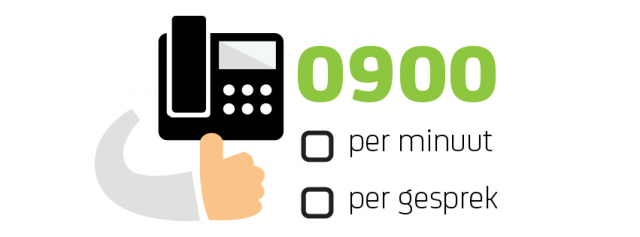Difference Between Hardphone and Softphone – What’s the Best Solution for Your Business?

The difference between a hardphone and a softphone is simple: a hardphone is a physical telephone device used to make and receive calls, while a softphone is a software-based phone that can be installed on various devices like desktop computers, mobile phones, or even ticket machines where you can call for assistance.
Both are telephones — one is hardware-based, and the other is software-based.
In this article, we’ll explain which option is best suited for different situations. This way, you’ll know exactly what you need to make your business optimally reachable.
Hardphone: Advantages and Disadvantages
A hardphone is a physical desk phone. Nowadays, all hardphones are Voice over IP (VoIP) phones that can connect to a phone system via a data network or internet connection.
You need to purchase these devices. An average hardphone costs between 100 and 200 euros. There are many different brands of hardphones, such as Yealink, Cisco, and Siemens.
We prefer Yealink phones. They offer good sound quality, are regularly updated, and are widely used. We can add Yealink devices to our Yealink administrator software provided by the manufacturer. This allows us to update the phones, resolve errors, and check the connection together.
Cisco is a global brand but operates as a closed system. You can’t access the phone without a Cisco phone system, which limits your freedom. Support is also very expensive.
Siemens also offers good devices but lacks proper administrator software for providers like us, making it harder to assist customers remotely. You’ll need some technical knowledge to configure these devices, but it’s not overly difficult.
A hardphone is ideal if you want a fixed device at your workplace that rings whenever there’s a call for you.
Softphone: Advantages and Disadvantages
A softphone is a software application that can be installed on a device.
The most common device for softphone installation is a computer.
Call centers are the biggest users of softphones. They equip computers with headsets and install softphone software. The computer then functions as a telephone.
This is very convenient for those answering calls, as it keeps both hands free for input.
It saves on investment costs since no hardphones need to be purchased.
Softphones on computers work perfectly. This is because the computer has a fixed IP address and is part of a stable data network.
However, there are disadvantages, especially when using a softphone on a mobile phone. Some providers offer a second number on your phone, but you’ll need to install a softphone app for this.
The downside is that the softphone app on your mobile often isn’t active or goes into sleep mode. There’s nothing you can do about this.
As a result, you’ll miss incoming calls when using a softphone on your mobile phone, no matter how good the softphone is.
Google “softphone not receiving calls,” and you’ll see this is a global issue.
Why is this solution still offered? Simple: cost savings for the provider. They don’t have to pay access fees for the GSM network to deliver calls to your mobile, saving money — and costing you incoming calls.
We don’t recommend using a softphone or separate app on your mobile phone for a business number unless you can afford to miss calls.
Our customers often spend a lot on advertising, so we prefer to provide a reliable solution through our fixed-mobile integration. If you’re looking for a telephony solution that delivers a fixed business number to your mobile phone, we’ve got you covered.
With us, you don’t need to install an app — it just works.
Frequently asked questions
A quick way to explore how everything works and what to expect.
Yes, you can use both hardphones and softphones in one phone solution. Our phone system “sees” phones and doesn’t care about their appearance. However, be mindful of when to choose each solution. Softphones generally work well only on desktop computers.
We play a short beep tone (the caller doesn’t hear this) or a custom message so you know it’s a business call. This way, you can answer with your business name and handle the call professionally.
When you test a softphone or app, the app is active, so it works in 99% of test calls. However, if you try calling yourself two days later, you’ll find the app isn’t active or doesn’t respond, and that’s the problem. There’s no solution for this. Thousands of people complain about this issue — just Google “softphone not receiving calls.” The only reliable way to receive calls on mobile is via the GSM network and your mobile phone itself. An app doesn’t work and is a budget solution.
It’s true that a softphone is cheaper than a hardphone. But how important are incoming calls to you? If you use a softphone only for outgoing calls, the quality is good. The app is always active in this case, so the softphone works. Contact us to discuss your business case!

 Netherlands
Netherlands Belgium
Belgium Denmark
Denmark Germany
Germany France
France Switzerland
Switzerland Austria
Austria UK
UK Spain
Spain Italy
Italy


